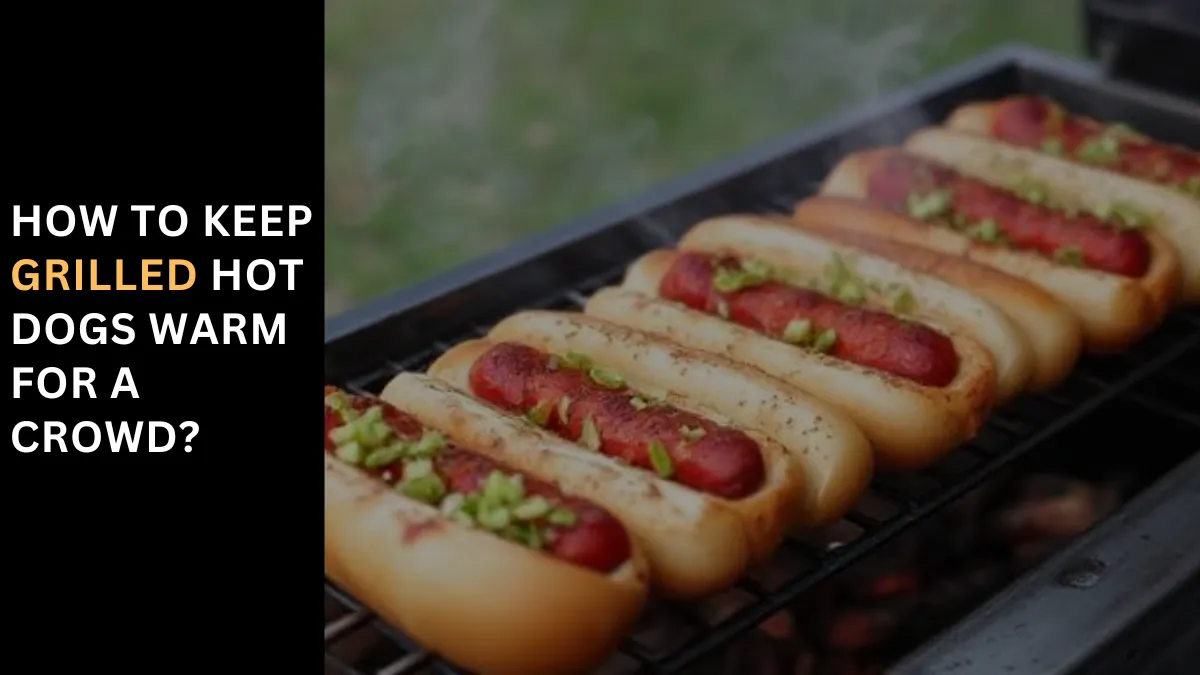Can You Smoke Meat at 175?
Why Is the Smoking Temperature Important?
Embarking on the timeless journey of open-fire cooking, the temperature of your smoker acts as a compass, guiding the flavors and textures of your meat to perfection.

When smoking at 175 degrees, it is crucial to maintain a meticulous balance to awaken the potential of the meat without sacrificing its intrinsic juiciness or flavor.
Temperature not only transcends basic cooking metrics; it is an essential element in revealing the essence of the meat, ensuring each cut is cooked to perfection.
This approach minimizes health concerns, maintaining a subdued yet effective heat to bring out the best in each meal.
Smoking Times & Temperature Chart
Navigating through the smoking times and temperatures for various types of meat can feel like diving deeper into a culinary alchemy. For instance, achieving that tender, fall-off-the-bone texture at 175 degrees can be challenging yet rewarding.

It requires not just the right duration but also the choice of firewood—a missing link in many smoking recipes that can elevate a simple dish to a culinary masterpiece.
Each meat, whether it’s robust red meats or delicate poultry, has its ideal smoking time and temperature that when meticulously cared for, results in an enticing, aromatic, and delectable dish.
What Are the Ideal Smoking Temperatures for Different Types of Meat?
In mastering the nuanced art of smoking meats, understanding the ideal temperature is critical.
This knowledge is rooted in ancestral traditions of open-fire cooking, where each type of meat has its own temperature range that best enhances its flavors and ensures a succulent finish.
Turkey
For turkey, a bird with a rich and distinct flavor profile, the perfect smoking temperature falls between 225°F and 250°F. Maintaining this range is crucial for maximizing the inherent flavors and preserving juiciness.
The whole turkey, due to its mass, requires a uniform cooking approach to unlock its full aromatic potential. Both breasts and thighs should reach an internal temperature that ensures safety and maintains texture.
Chicken
Chicken, versatile and universally loved, demands slightly elevated temperatures for optimal flavor infusion. A whole chicken should ideally be smoked between 250°F and 275°F.
This ensures the internal finish meets USDA safety levels, while the longer cooking periods at lower temperatures help to preserve moisture, making the chicken juicy and enhancing its deeper flavors.
Beef
In the realm of smoking meat, the artistry involved in handling beef, meat revered for its robust character and versatility, shines particularly brightly. For cuts like brisket, achieving the perfect internal finish—a medium-rare juicy texture—demands precise temperature settings.
Smoking this cut at around 225°F to 250°F allows the meat to slowly assimilate the smoky essence, deepening its natural richness. The prime rib and tri-tip, known for their marbling and unique textures, follow suit, with temperatures that may elevate slightly higher to capture their finest flavors.
Each steak, from rare to well-done, must be treated as a culinary masterpiece, requiring meticulous attention to temperature to respect the transformative quality of smoke and the intricate dance of aromas that brings us closer to our deep-rooted culinary traditions.
This smoking process not only preserves ancestral art but enhances the glowing warmth and flavorful zenith that make beef a staple at any fire-lit gathering.
Smoking Chart
| Meat Type | Cut | Temperature | Smoking Time | Target Internal Temp |
| Turkey | Whole | 225°F | 3-4 hours | 165°F |
| Leg | 225°F | 3-3.5 hours | 165°F | |
| Breast | 225°F | 1.5-2 hours | 165°F | |
| Chicken | Whole | 225°F | 4-5 hours | 165°F |
| Thighs | 225°F | 1.5-2 hours | 165°F | |
| Beef | Brisket | 225°F | 10-12 hours | 190°F-203°F |
| Prime Rib | 250°F-275°F | 4-5 hours | 130°F (medium-rare) | |
| Tri-tip | 225°F | 2-3 hours (then sear) | 135°F (medium-rare) |
Tips for Getting the Perfect Flavor
Use the Right Type of Smoker
The quest for the perfect smoked dish begins with choosing the right smoker, a decision that can be overwhelming for beginners. While electric smokers offer convenience, they often lack the deep, smoky essence that defines a true smoking experience.

On the other hand, pellet smokers, despite their hint of authenticity, are limited by their reliance on electricity and fail to provide the depth of flavor achieved by charcoal smokers.
Charcoal smokers epitomize authenticity, releasing intoxicating aromas that have been revered by pit masters for centuries.
These smokers not only fuel the cooking process with immersive, primal energy but also allow for expert heat control and wood chunk management, key tools in mastering the harmony of time and temperature necessary to create culinary magic.
Season Your Meat
To create a smoky masterpiece, view your meat as a canvas where every seasoning acts like masterful strokes on the finest paintings. Achieving grandeur with simplicity involves using the classic trio of olive oil, salt, and pepper.

A drizzle of quality olive oil not only preserves moisture but adds a layer of rich elegance.
Salt works to bring forth the inherent flavors of the meat, while freshly ground pepper introduces a subtle heat that dances on the palate. Never underestimate the power of these basic elements to elevate your dish in the smokehouse.
Use a Meat Thermometer
In the world of smoking, precision is the key to perfection. A digital meat thermometer serves as a trusted confidante, ensuring that your meat reaches the desired internal temperature, a testament to safety and culinary expertise.
Whether you’re striving for tender, fall-off-the-bone texture or the perfect medium-rare, using a thermometer can alter the texture and juiciness of your prize, making it the guiding star in your smoking process.
Use the Right Wood
Selecting the right wood is essential in smoking, as it is not just fuel but the very soul of the smoke that imbues your meat with distinct flavors and aromas.
Each type of wood contributes a unique profile to the dish: Hickory, with its longevity and robust flavor, is ideal for red meats; Pecan offers a classic smoky taste, harmonizing well with various kinds of meats; Oak is often recommended for beginners due to its subtle wood-fired taste and versatility across meat types including brisket and poultry.
Cherry wood enhances dishes with its sweet essence and rosy tint, while Maple burns brightly, consistently imparting delightful flavors.
Applewood is a crowd favorite, especially for its sweet undertones that complement poultry and pork superbly. No matter which you choose, the wood type becomes an integral component of your culinary masterpiece.
Conclusion:
Smoking meat at 175 degrees Fahrenheit is feasible and can lead to delicious results, especially when handled with care and precision.
While this temperature is slightly below the typical range for most meats, it is still effective for achieving tender, well-cooked outcomes with the right cuts, such as brisket, when monitored closely and combined with techniques like wrapping in butcher paper to retain moisture and develop a perfect bark.
Ultimately, smoking at this lower temperature can enhance flavor without sacrificing safety, provided the internal temperatures of the meats reach the necessary thresholds to ensure they are fully cooked and free from harmful bacteria.
This method appeals particularly to those looking to slowly coax out deep, smoky flavors while maintaining the juiciness and texture of the meat.
People also ask
What is the lowest temp to smoke meat?
Determining the lowest temperature to smoke meat safely involves balancing flavor development with food safety. Generally, meat smoking starts in the range of 200 to 220 degrees Fahrenheit, ensuring meats are cooked to a safe internal temperature—145 degrees for most meats and 165 degrees for poultry.
Is it safe to smoke meat at 170 degrees?
Smoking meat at 170 degrees can be challenging as most types of meat require a smoker temperature of 190 to 225 degrees to effectively smoke and ensure the finished temperature of the meat is high enough to cook thoroughly and be safe from bacteria.
Can you smoke meat at 180?
Smoking at 180 degrees can yield excellent results for certain meats, allowing them to reach a tender barbecue quality. This temperature control ensures meats are cooked safely to their final internal temperature without drying out.
Is 175 too low for brisket?
When smoking brisket, a temperature of 175 degrees might seem low, but it can be sufficient if managed properly. Once the brisket’s internal temperature reaches 165°F, it’s common to wrap it in butcher paper to retain moisture and continue the cook until the bark is properly set, ensuring the meat is perfectly tender.



